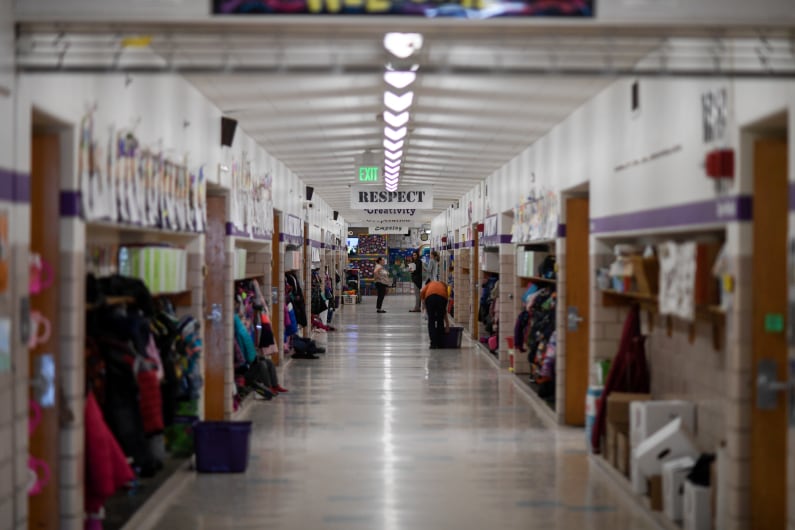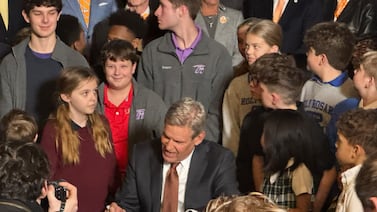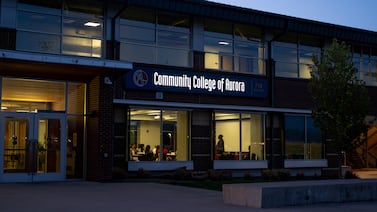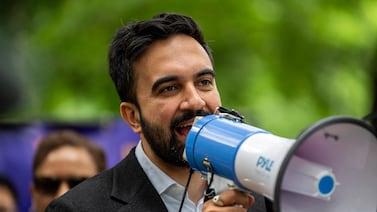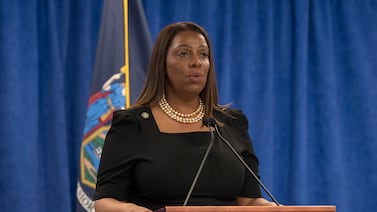The first day of school in Colorado will look different this year. But how much different — and for how long — depends on where you are. In a state with a tradition of allowing local governments to make their own rules, there is no statewide strategy for reopening schools in a pandemic.
Instead, each one of Colorado’s 178 school districts is coming up with its own plan.
The plans vary, but there are three basic options: 100% in-person learning, 100% remote learning, or a hybrid of the two. Many districts are offering families two choices, with one being totally online. Some of the state’s biggest districts are starting online and then moving to in-person learning if or when district and local public health officials deem it safe.
Each option has upsides and downsides. Any decision a school district makes is going to meet with pushback from parents and teachers who would face real struggles under that scenario.
Some worry that reopening schools carries too much risk that teachers, school staff, students and their families could contract COVID. Others worry about the academic and social deficits of remote learning. Online learning is especially hard for students with disabilities, who may struggle to stay engaged and miss out on valuable hands-on therapies. Still other parents and teachers recognize that if kids are home, some parents won’t be able to work.
“I am calling it a lose-lose scenario,” said Denver high school teacher Katie Nethery.
We spoke with parents and teachers about the benefits and challenges of each option, and also heard from health officials. Here’s a rundown of the three options.
100% remote learning
Most Colorado school districts are offering families the option to take classes online all year, and several school districts around the state, including large ones such as Denver, Jeffco, and Aurora, are planning to start the school year remotely. On Tuesday, four districts in northern Colorado joined them, citing rising cases in the community and testing delays.
Staying home presents the lowest risk in terms of the coronavirus. However, pediatricians have stressed that it comes with significant tradeoffs for many children, including access to school meals and opportunities for social interaction and emotional growth.
“There are risks to having kids go to school and risks to having kids stay home, and we should strive to balance those,” said Bill Burman, the director of Denver Public Health, which has been consulting with Denver Public Schools on its fall plans.
Teachers unions across the country are advocating for schools to begin the year remotely — not because remote learning is better academically, but because it’s safer health-wise.
“I don’t want to bring a bunch of kids into a classroom and send them home to people who literally can’t afford to get sick,” said Michele Morenz, who teaches at an elementary charter school in Denver that serves students from low-income families.
Maria Trujillo, a mother of two elementary students in the Adams 14 district in Commerce City, said she is happy her district has decided on a remote start through the first quarter, but she would have more peace of mind if the remote learning lasted all semester.
“It makes us feel safer as parents, and I think teachers would also feel safer,” Trujillo said.
However, Trujillo said she hopes remote learning will be better in the fall than it was in the spring, when teachers had to abruptly move their lessons online after school buildings closed in March. Trujillo said she felt students had “very little” virtual contact with their teachers.
“Kids had questions, and it was hard to get teachers to respond quickly,” she said.
In an end-of-the-year survey about remote learning, 54% of Denver Public Schools parents who responded identified getting their child to engage with remote learning as one of the barriers they faced in the spring. Second to that, 46% of parents said one of the barriers they faced was not having the time or capacity to help their child with schoolwork.
In families where adults are working, supervising remote learning can seem impossible.
“I don’t know what families with two working parents are supposed to do,” said Jody Robins, a Denver parent who responded to a Chalkbeat survey about fall school plans.
100% in-person
By contrast, the 100% in-person option ensures students will be taught — and supervised — by teachers all day. It also ensures that students will be fed at least twice a day, play and talk with their peers, and have access to mental health workers and school nurses.
“Online school was a disaster, and my daughter got very far behind,” said Kara Johnston, a Jeffco parent who responded to our survey. Her daughter will be a high school senior. “More than half her teachers just posted YouTube videos and made no attempt to teach or lecture. She misses her peers; nothing replaces classroom banter and sharing ideas.”
Several districts, including Colorado Springs School District 11, are planning to start school later this month by offering in-person instruction five days a week to elementary and middle school students, while offering a hybrid option for high school.
Jordan Tunney, a middle school social studies teacher in District 11, said he’s comfortable with the plan to teach students face-to-face. He, his wife, and their 2-year-old are all relatively healthy, he said, and he feels the safety measures the district has put in place — requiring face masks and encouraging social distancing — seem adequate.
“I’m a big believer in in-person learning,” Tunney said. While remote learning worked OK for most of his students last spring, there were some he and his colleagues never heard from.
“That got to us a little bit,” Tunney said. With in-person learning, he said, “students can academically check out when they’re at school. But they can’t socially check out.”
But of course, in-person learning poses a greater risk of COVID exposure than remote learning. That’s the main reason many teachers oppose it. And there are lots of parents who agree.
“I am not sending my children into a petri dish,” said Elizabeth Miot, who responded to Chalkbeat’s survey. Her children attend a Jeffco elementary school.
Research about the health risks of COVID-19 to children is not conclusive. But a study out of South Korea suggests older children more easily spread the virus. Some public health experts say that if school buildings reopen, coronavirus will spread.
“There is a need to figure out how we serve our children, but it is a lack of imagination and a lack of political will to say the only way to do that is in a brick building,” said Brian Castrucci, president and CEO of the de Beaumont Foundation, which works on public health issues.
There’s another downside to in-person learning, too: State guidelines call for students to learn from home for 14 days if a student or teacher in their group gets sick. Some parents and teachers fear that type of switching back and forth will be disruptive — and frequent.
India Snow, a teacher in the St. Vrain Valley School District who responded to Chalkbeat’s survey, said it seems unfair to bring students back only to send them home again.
“I can see them losing motivation because they won’t be able to trust how long we’ll be back in person, which will lead to decreased motivation online,” Snow said.
Hybrid
In many ways, the hybrid option seems like a reasonable compromise: students and teachers would incur some health risk, but they’d also get some of the benefits of in-person learning.
Most districts’ hybrid plans entail students learning in person about half the time and at home half the time. That could look like students attending school in person on alternating days, or some students attending in the morning and others in the afternoon.
This option is particularly popular for older students, who are more likely to be able to learn independently online and better at maintaining 6 feet of distance.
But school officials say they worry the hybrid model may pose some of the same health risks as fully in-person learning. And there’s an added concern, too: Health officials have cautioned that schools will have little control over where students spend their time when they’re not in class. If younger students are attending child care on remote learning days, or older students are hanging out together, that could actually increase their virus exposure.
The hybrid model also leaves many parents to try to supervise remote learning at least half the week. In Douglas County, which is starting the school year with a hybrid schedule, parents protested the plan and called for a full-time return.
In Sheridan, the 1,200-student school district south of Denver, the district is planning on a hybrid return in two weeks for its middle and high school students.
Fabiola Aguirre, a mother of a high school senior in Sheridan, is reluctantly allowing her son to attend. While she’s concerned about the virus, including because some of her family members are at high risk for complications from COVID-19, she also sympathized with her son who has been stuck at home since March. Remote learning didn’t go well for him, she said.
“He had difficulties learning online, and it really does help him to be present with the teachers,” Aguirre said. “I’m a little relieved that it’s only half a day and that they won’t be eating together.”
However, she first had him promise to follow all the safety guidelines at school, including wearing a mask. And when he heads home after classes, he will follow the same procedure his parents use after work: going straight to the bathroom to clean up and change clothes.

